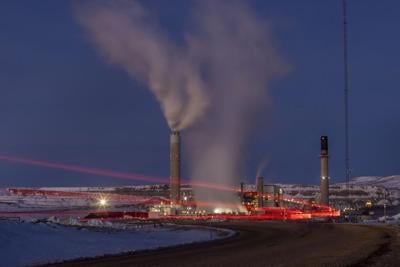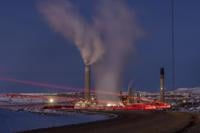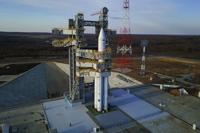Bill Gates and his energy company are starting construction at their Wyoming site for a next-generation nuclear power plant he believes will “revolutionize” how power is generated.
Monday to break ground on the project. The co-founder of Microsoft is chairman of TerraPower. The company applied to the Nuclear Regulatory Commission in March for a construction permit that uses sodium, not water, for cooling. If approved, it would operate as a commercial nuclear power plant.
The site is adjacent to PacifiCorp’s Naughton Power Plant, which will stop burning coal in 2026 and natural gas a decade later, the utility said. Nuclear reactors . PacifiCorp plans to get carbon-free power from the reactor and says it is weighing how much nuclear to include in its long-range planning.
The work begun Monday is aimed at having the site ready so TerraPower can build the reactor as quickly as possible if its permit is approved. for developing sodium-cooled reactors.
Gates told the audience at the groundbreaking that they were “standing on what will soon be the bedrock of America’s energy future.”
“This is a big step toward safe, abundant, zero-carbon energy,” Gates said. “And it’s important for the future of this country that projects like this succeed.”
Advanced reactors typically use a coolant other than water and operate at lower pressures and higher temperatures. Such technology has been around for decades, but the United States has continued to build large, conventional water-cooled reactors as commercial power plants. The Wyoming project is the first time in about four decades that a company has tried to get an advanced reactor up and running as a commercial power plant in the United States, according to the NRC.
It’s time to move to advanced nuclear technology that uses the latest computer modeling and physics for a simpler plant design that’s cheaper, even safer and more efficient, said Chris Levesque, the company’s president and chief executive officer.
TerraPower's Natrium reactor demonstration project is a sodium-cooled fast reactor design with a molten salt energy storage system.
“The industry’s character hasn’t been to innovate. It’s kind of been to repeat past performance, you know, not to move forward with new technology. And that was good for reliability,” Levesque said in an interview. “But the electricity demands we’re seeing in the coming decades, and also to correct the cost issues with today’s nuclear and nuclear energy, we at TerraPower and our founders really felt it’s time to innovate.”
A Georgia utility just finished in a generation at a cost of nearly $35 billion. The price tag for the expansion of Plant Vogtle from two of the traditional large reactors to four includes $11 billion in cost overruns.
The TerraPower project is expected to cost up to $4 billion, half of it from the U.S. Department of Energy. Levesque said that figure includes first-of-its-kind costs for designing and licensing the reactor, so future ones would cost significantly less.
Most advanced nuclear reactors under development in the U.S. rely on a type of fuel — known as high-assay low-enriched uranium — that's enriched to a higher percentage of the isotope uranium-235 than the fuel used by conventional reactors. TerraPower delayed its launch date in Wyoming by two years to 2030 because Russia is the only commercial supplier of the fuel, and it’s working with other companies to develop alternate supplies. The U.S. Energy Department is working on .
Edwin Lyman co-authored an article in Science on Thursday that raises concerns that this fuel could be used for nuclear weapons. Lyman, the director of nuclear power safety with the Union of Concerned Scientists, said the risk posed by HALEU today is small because there isn’t that much of it around the world. But that will change if advanced reactor projects, which require much larger quantities, move forward, he added. Lyman said he wants to raise awareness of the danger in the hope that the international community will strengthen security around the fuel.
NRC spokesperson Scott Burnell said the agency is confident its current requirements will maintain both security and public safety of any reactors that are built and their fuel.
Gates co-founded TerraPower in 2008 as a way for the private sector to propel advanced nuclear energy forward to provide safe, abundant, carbon-free energy.
The company's 345-megawatt reactor could generate up to 500 megawatts at its peak, enough for up to 400,000 homes. TerraPower said its first few reactors will focus on supplying electricity. But it envisions future reactors could be built near industrial plants to supply high heat.
Nearly all industrial processes requiring high heat currently get it from burning fossil fuels. Heat from advanced reactors could be used to produce hydrogen, petrochemicals, ammonia and fertilizer, said John Kotek at the Nuclear Energy Institute.
It’s significant that Gates, a technological innovator and climate champion, is betting on nuclear power to help address the climate crisis, added Kotek, the industry group’s senior vice president for policy.
“I think this has helped open people’s eyes to the role that nuclear power does play today and can play in the future in addressing carbon emissions," he said. “There’s tremendous momentum building for new nuclear in the U.S. and the potential use of a far wider range of nuclear energy technology than we’ve seen in decades.”
___
The Associated Press’ climate and environmental coverage receives financial support from multiple private foundations. AP is solely responsible for all content. Find AP’s for working with philanthropies, a list of supporters and funded coverage areas at .








































